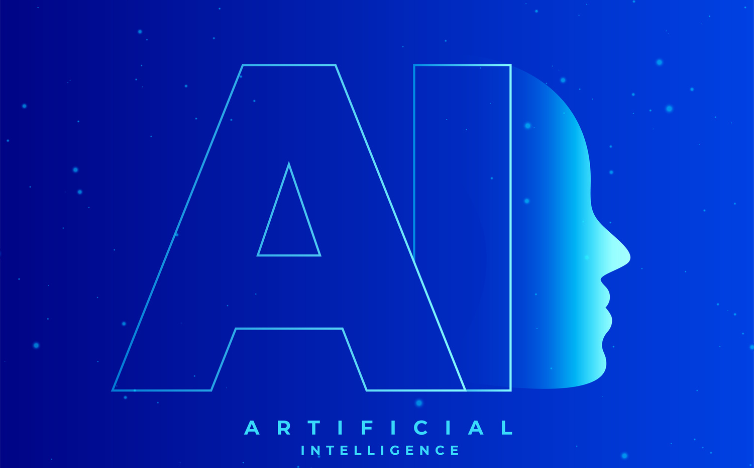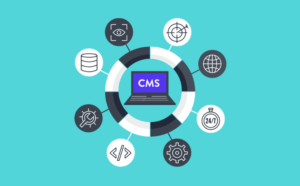AI tools are not a new thing in the fast-changing landscape of digital marketing and business processes. From predictive analytics to chatbots, AI can streamline processes, improve customer experiences and facilitate growth. However, given the huge number of AI tools available, it is difficult to select the right one. Therefore, this blog post will give a comprehensive guideline on how marketers and small business owners go about selecting AI tools within their firms.
Table of Contents
Understanding Your Needs: The Basis for Selecting AI Tools
It is essential to evaluate your business demands and pain points before you venture into any market offering. Unlike an elixir that cures all ailments which can be bought over-the-counter,artificial intelligence is a delicate tool that needs to be carefully adjusted to work well for specific tasks. By doing so, you will be able to identify what exactly you need from an AI tool.

Assess Your Pain Points
AI has several applications such as automation of repetitive activities, enhancing data accuracy or personalization. Therefore, start by identifying areas within your enterprise where AI can offer most value.
Define Your Objectives
Next step after identifying pain points is setting out clear targets on what you want to achieve through implementing AI. This might include improving operational efficiency or better marketing outcomes among others which have clearly defined metrics for determining the effectiveness of an AI tool.
Consider Budget and Resources
A budget should also be set aside for adopting artificial intelligence technology while considering financial resources as well as human resource allocation towards it. This encompasses the cost of acquiring the tools themselves as well as training teams who will use them plus continuous support required thereafter in addition to other related expenses associated with teaching the staff or maintaining equipment’s used during this process which requires balancing budget constraints against ambition.
See Also: How To Improve Small Business With AI Tools
Types of AI Tools: Which Suits Your Purpose?
With your needs in mind, let us now look at some different forms of AI tools. Each of these serves a different function, and it is important to match the tool to your purpose for effective integration.

Natural Language Processing (NLP) Tools
These tools are meant for processing and analyzing natural language data so that machines can understand, interpret and respond intelligently to human language. NLP tools are suitable for content creation, chatbots, and sentiment analysis which in turn enhance interactions with customers while giving insights into customer behavior.
Machine Learning Platforms
These platforms enable businesses to create predictive models as well as leverage the data available towards making business decisions. This includes tasks such as product recommendations, customer segmentation or fraud detection which become stronger over time by learning from new data points; Analytics Assistants suggest KPIs based on past patterns of activity.
Robotic Process Automation (RPA)
An RPA tool is designed to automate manual tasks by mimicking human user actions. These are most useful in back-office operations like invoice handling and data entry among others as they reduce the workload on humans and allow them to get engaged in more valuable work.
Predictive Analytics Tools
AI-driven forecasters apply machine algorithms to historical data patterns forecasting outcomes years away; these tools facilitate proactive risk management using artificial intelligence. They are invaluable for predicting future trends, assessing risks, etc.; thus enabling companies make more proactive decisions ahead of time.
See Also: AI Tools for Data Analysts
Image Recognition and Computer Vision
For instance, image recognition software or computer vision systems analyze visual content i.e., pictures/videos helping them understand the world around them. The applications range from quality control activities at manufacturing plants up till personalized ads can be made available.
The Place to Source AI Tools: Where and What to Look For
After you have figured out the kind of AI tools you need, identify where to get them from. Multiple sources offer AI tools, from big players in the industry to small start-ups with unique features and benefits.
Survey Markets
Explore the market for AI tools and find vendors that are specifically into the type of AI solution you seek. For example, it may be helpful in determining whether a tool has good reviews or how it performs, attending webinars on its use or asking for recommendations about it’s reputation among your colleagues in profession.
Vendor Ecosystems
Look beyond individual tools to consider the larger ecosystem surrounding them. Seek out suppliers who can integrate their products with your existing software and platforms, provide ongoing support and offer a roadmap for future improvements that align with your business plans.
Trials and Pilots
A majority of vendors dealing with AI software offer free trials or pilot programs through which end users are allowed to try using a product under real-life circumstances before they finally adopt it. Assessing its effectiveness during these trials enables an organization not only to gather inputs from various individuals but also make sure that the tool does what it is intended for.
AI Implementation: Best Practices for Success
It is easy choosing appropriate AI tools; however, implementing them correctly is what really counts in terms of ROI (return on investment). The following points highlight some ways of incorporating these systems into your company effectively.

Begin With A Pilot Project
Start by running a small pilot project so as to test tool functionality as well as performance. This will help identify any challenges early enough while building a precedent case for wider implementation.
Training and Change Management Investments
The new technology can be only effective if people know how to use it. Appropriately train all members of staff so that they understand how best they can utilize this new technology. In addition, you should detail about why investing in AI culture is a great idea and help minimize resistance.
Monitor and Refine
Once your AI tool is launched, closely monitor its performance. Use the data as well as feedback from users to make adjustments to the operation of the tool. This ongoing process will maximize AI’s potential in your company.
KPIs for Measuring AI Tool Performance
Just like any other business initiative, it is important that you measure how successful your AI tool has been. Determine key performance indicators (KPIs) that are aligned with your initial goals and track them over time to determine if the tool has made any impact.
Efficiency
To know if operational efficiency was enhanced, check on metrics such as processing time, error rates and resource consumption for instance by comparing these figures with those prior to adoption of this new software.
Engagement Levels and Customer Satisfaction Ratings
For customer-facing AI tools, track KPIs related to engagement such as click-through rates, time on site or conversion rates. To get an understanding of how satisfied they are with a product or service one can also use surveys and social listening platforms.
Revenue Generation And ROI
Revenue should be positively impacted by marketing and sales-centric artificial intelligence software. Look at sales numbers, customer lifetime value, return on investment (ROI) etc when determining whether a particular system contributed to business growth or not.
AI Adoption: Overcoming Challenges

However, AI adoption has its own challenges. This includes overcoming hurdles such as technical complexity, concerns about data privacy, and ethical considerations. Addressing these difficulties directly can ensure an easy implementation and a sustainable performance.
Technical Acumen
Most AI tools need some level of the technical knowledge in their implementation and maintenance. Assess your staff’s skills and consider partnering with IT professionals or talking to tool vendors so as to bridge the gap.
Quality and Privacy of Data
The efficiency of AI depends on large volumes of data; this means that the quality of data is important. Ensure your information is clean, accurate, and up-to-date to avoid garbage in-garbage out situations. Moreover, develop strong data privacy guidelines which safeguard consumer details while also ensuring adherence to regulations.
Ethicalities Surrounding AI
As Ai becomes more pervasive, so do ethical considerations regarding its use. Mind potential prejudices within algorithms as well as AI governance questions; be aware of what the industry guidelines say. For an effective yet responsible implementation of AI practices at any time ensure that you have yourself updated with what’s happening around you through guidelines provided by industrial experts or other educational materials.
Marketing and Business Future With AI
The role marketing plays in artificial intelligence will continue expanding as AI grows. Keep an eye on leading developments that will make it possible for your business to adopt new tools that utilize AI algorithms giving them a competitive edge.
6 Advanced Future Trends for AI That You Should Know About Now
These may include emerging trends like federated learning, explainable AI, or AI that can be used for social good among others which enable companies to differentiate themselves from competitors thereby creating new opportunities for growth and innovation.
Developing a Culture Ready for AI Implementation
Wherever managers want to enhance productivity using AI systems they establish tech-savvy, adaptive, future-oriented workplace culture Always encourage constant learning among employees even if it mean making mistakes along the way and being open to change so that your people will always be ready for AI.
Collaborations and Partnerships
To access cutting-edge AI technologies and expertise, consider partnering with AI start-ups, academic institutions, or established tech companies. Collaborating could also lead to shared insights as well as developing customized AI-based solutions specifically designed to suit your business needs.
Case Studies: Successful AI Applications in Practice
There are no better ways of demonstrating the potential of AI than real-life success stories. Search for a number of case studies showing how enterprises have managed to integrate ai tools successfully leading to transformational returns on investment that you can draw inspiration from in your own journey.

Chatbots Enhancing Customer Engagement
For example, examine how a retail enterprise employed chatbots supported by artificial intelligence (ai) systems ensuring 24/7 customer care support; this strategy contributed significantly towards higher client satisfaction rates and conversion ratios.
Predictive Analytics Optimizing Supply Chain Management
Find out how a logistics firm used predictive analytics for demand forecast and inventory management resulting in cost reduction as well as improved delivery performance.
Recommendation Engines Personalizing User Experiences
Understand how an internet streaming service enabled users gain from ai driven recommendation engines hence increasing user engagement levels among different groups thus keeping them more engaged.
Final Words
Finally, it can never be overstated that embracing artificial intelligence in marketing and business operations is strategically imperative. If done methodically by assessing one’s need, choosing the right tools and implementing effectively, AI is capable of driving meaningful benefits for your company in this digital era.
AI tools can be hard to navigate, but if you approach it with the right frame of mind and have access to enough resources, you will be able to use AI’s potential and experience new openings and accomplish your business objectives. Remember that successful AI adoption is not about the technology itself, but how it’s integrated into your business to enhance your unique value proposition and meet the needs of your customers. Embrace the journey, and let AI be the catalyst for your business’s next chapter of growth and innovation.
FAQS
What should businesses consider when choosing AI tools?
Speaking about the choice of artificial intelligence programs, one must look into factors such as specific needs and goals, compatibility with existing systems, ease of integration and use, scalability, cost-effectiveness and vendor reputation.
How do businesses determine their AI needs before selecting tools?
For a business to understand its tactical obligations as far as artificial intelligence is concerned it has to review its present workflows in order to identify areas in which change is necessary, fix desired outcomes for all future undertakings in addition to prioritizing functionality that would help accomplish the set objectives.
How important is data quality and availability when choosing AI tools?
The importance of data quality cannot be overemphasized as far as these machine learning models are concerned; this means that any business should ensure it has proper access to relevant high-quality data that will support accurate predictions or results from software algorithms employed during the decision making process.
What level of customization and flexibility do AI tools offer?
Consideration for those that can be customized to fit your own needs or changed because they offer usage flexibility beyond today’s requirements within the organization or across linked platforms due to unstable situations calls upon some parameters given by organizations.




